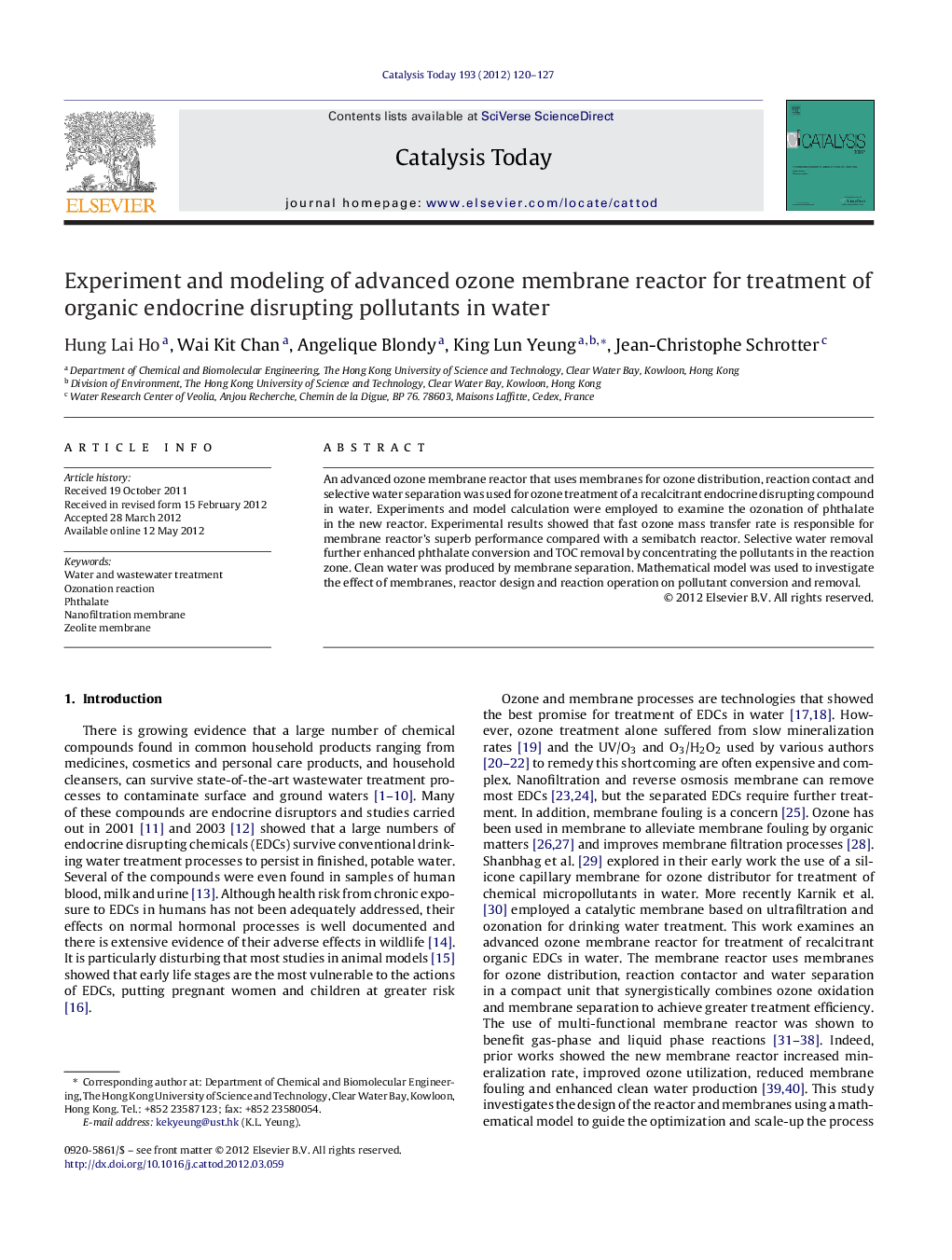| Article ID | Journal | Published Year | Pages | File Type |
|---|---|---|---|---|
| 55071 | Catalysis Today | 2012 | 8 Pages |
An advanced ozone membrane reactor that uses membranes for ozone distribution, reaction contact and selective water separation was used for ozone treatment of a recalcitrant endocrine disrupting compound in water. Experiments and model calculation were employed to examine the ozonation of phthalate in the new reactor. Experimental results showed that fast ozone mass transfer rate is responsible for membrane reactor's superb performance compared with a semibatch reactor. Selective water removal further enhanced phthalate conversion and TOC removal by concentrating the pollutants in the reaction zone. Clean water was produced by membrane separation. Mathematical model was used to investigate the effect of membranes, reactor design and reaction operation on pollutant conversion and removal.
Graphical abstractAdvanced ozone membrane reactor employs membranes for ozone distribution, reaction contacting and water separation to achieve high phthalate conversions and TOC removal.Figure optionsDownload full-size imageDownload high-quality image (211 K)Download as PowerPoint slideHighlights► A new membrane reactor that synergistically uses membranes as distributor, contactor and separator for treatment of refractory organic pollutant in water. ► The advanced ozone membrane reactor can achieve high phthalate conversion and TOC removal compared to traditional semibatch reactor. ► Mathematical modeling examines how the membrane properties, reactor design and operation can be optimized to achieve best pollution treatment at minimum ozone consumption.
